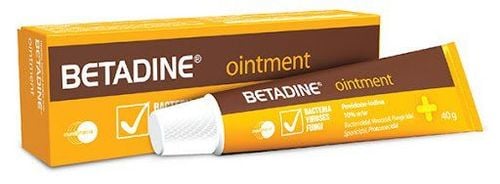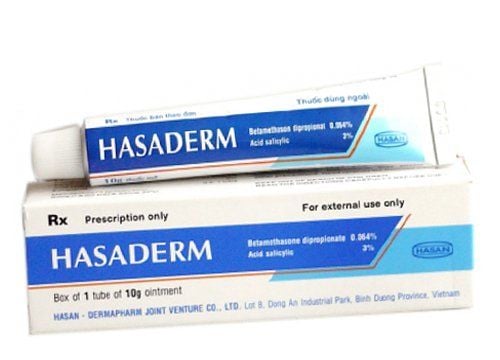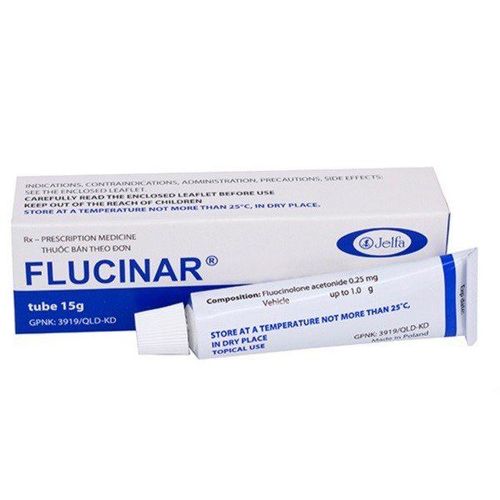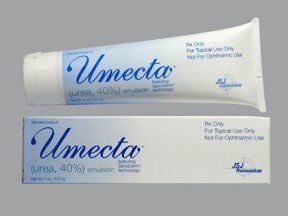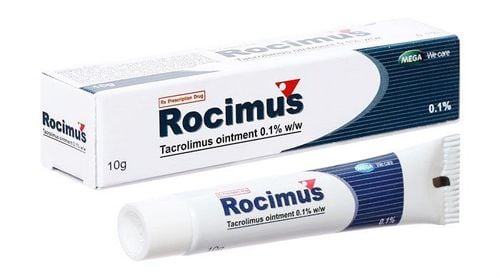This is an automatically translated article.
Tacrolimus is a potent immunosuppressant commonly used in anti-rejection. In addition, the drug is also formulated as Tacrolimus 0.03% ointment for the treatment of moderate to severe atopic dermatitis when traditional therapies are not suitable or the patient's response is inadequate.
1. What is Tacrolimus?
Tacrolimus is a macrolide (macrolactam) extracted from the fungus Streptomyces tsukubaensis, which has strong immunosuppressive effects. The drug is indicated for the prevention of transplant rejection after organ transplantation. In addition, the drug is also prepared in the form of ointment Tacrolimus 0.03% for the treatment of atopic dermatitis. Tacrolimus inhibits T-lymphocyte activation by binding to an intracellular protein FKBP-12, then forming a complex of tacrolimus - FKBP12 - calcium, calmodulin and calcineurin, thereby inhibiting calcineurin phosphatase activity. This effect prevents the dephosphorylation and transport of nuclear factor in activated T cells (NFAT), which initiates gene transcription to form lymphokines (such as interleukin-2).
Tacrolimus also inhibits the transcription of genes that code for IL-3, IL-4, IL-5, GM-CSF, and TNF-(alpha), which are genes in the early stages of T-cell activation. In addition, Tacrolimus can also inhibit the release of chemical mediators from mast cells and basophils of the skin.
2. Uses of Tacrolimus 0.03%
Tacrolimus 0.03% Ointment is for short-term or long-term intermittent use for the treatment of moderate to severe atopic dermatitis when traditional therapies are not appropriate, because of potential risks or patient response. not enough.
3. Dosage and usage of Tacrolimus 0.03% ointment
How to use: Apply a thin layer of ointment to the affected area twice a day and massage gently. Patients should continue treatment for an additional week after the signs and symptoms of atopic dermatitis have resolved. Of note, the safety of tacrolimus ointment dressings has not been evaluated, as systemic absorption may be increased. Therefore, it is not recommended to cover the wound when using Tacrolimus 0.03% ointment.
Dosage
Adults: Apply 0.03% tacrolimus ointment twice a day. Children (2 - 15 years): Apply Tacrolimus 0.03% ointment twice a day.
4. Tacrolimus 0.03% side effects
When using Tacrolimus 0.03% ointment, patients may experience the following undesirable effects:
On the skin: Burning, red skin, itching, stinging pain, folliculitis, Herpes simplex (herpes) infection , ulcers, herpes eczema, Kaposi varicella). Nervous system: increased skin sensitivity, especially to heat and cold. Body as a Whole: Alcohol intolerance (facial flushing or skin irritation after drinking alcoholic beverages).
5. Notes when using Tacrolimus 0.03%
Do not use Tacrolimus 0.03% ointment for patients with a history of hypersensitivity to Tacrolimus or any of its ingredients, pregnant and lactating women. Tacrolimus ointment is for external use only, not for use in the eyes, mouth or vagina. The safety and efficacy of Tacrolimus ointment in the treatment of infectious atopic dermatitis have not been evaluated. Therefore, it is necessary to cure the infection before using tacrolimus 0.03% at the sites to be treated. Patients with atopic dermatitis are predisposed to superficial bacterial skin infections including herpetic eczema (Kaposi varicella nodules). Use of tacrolimus ointment may increase the risk of infection with the Varicella zoster virus, Herpes simplex, eczema herpetiformis. In case the patient has the above infection, it is necessary to evaluate the risks and benefits of taking tacrolimus to decide whether to use the drug or not. Patients should limit or avoid exposure to natural or artificial light (UVA/B skin beds) during treatment with Tacrolimus ointment. Local symptoms including burning sensation, pain, skin ulceration, and itching are common symptoms during the first few days of taking tacrolimus 0.03%. These symptoms will subside as the atopic dermatitis lesions are cured. Tacrolimus 0.03% ointment should not be used in patients with Netherton's syndrome due to the increased risk of systemic absorption. Note that the safety of tacrolimus in patients with generalized erythema has not been established. Pregnancy: There are currently insufficient data on pregnant women. This drug is only used for pregnant patients when prescribed by a specialist. Lactation: Tacrolimus is excreted in human milk. Therefore, consideration should be given to whether to discontinue nursing or to discontinue the drug, depending on the importance of the drug to the mother. Drug interactions: Currently, there are no studies on the interaction of Tacrolimus topical with other topical drugs. Based on the extent of absorption of Tacrolimus when applied topically, interactions with systemic drugs rarely occur, but the possibility cannot be ruled out. Caution is advised when co-administering with CYP3A4 inhibitors (e.g., erythromycin, itraconazole, ketoconazole, fluconazole, calcium channel blockers, and cimetidine) in patients with extensive topical application and erythema above. This is general information about Tacrolimus 0.03% ointment. Patients should not self-medicate, but should consult a doctor or pharmacist before taking.
Please dial HOTLINE for more information or register for an appointment HERE. Download MyVinmec app to make appointments faster and to manage your bookings easily.




